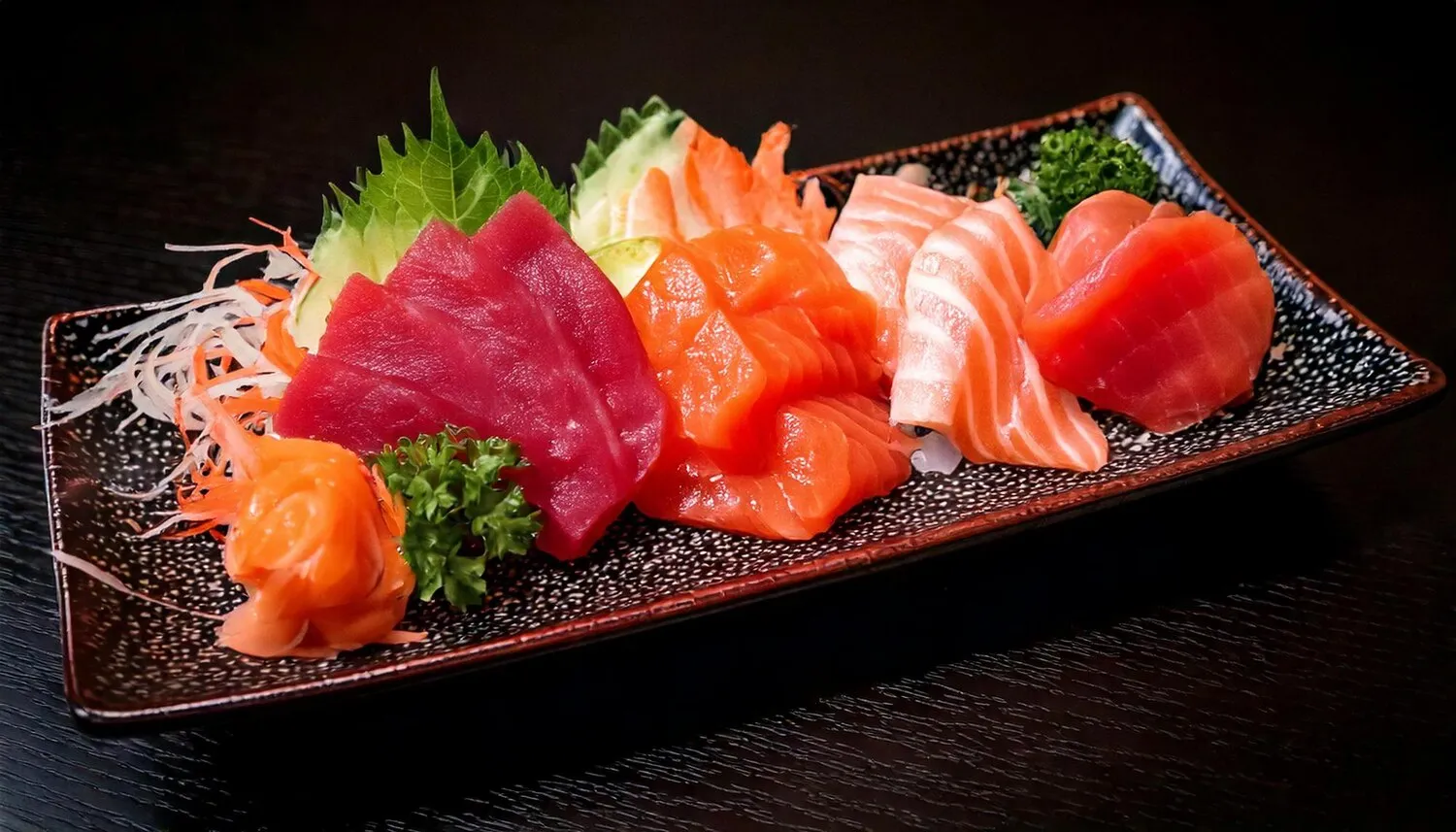
Sashimi
Thinly sliced raw fish.
Nutrition Facts
* The % Daily Value (DV) tells you how much a nutrient in a serving of food contributes to a daily diet. 2,000 calories a day is used for general nutrition advice.
Lives Sushi Lounge
The origins of sashimi can be traced back to ancient Japan, where raw fish consumption was limited due to preservation challenges. Early forms involved techniques to extend shelf life, eventually evolving into the art of slicing and presenting raw fish for optimal taste and texture.
Sashimi is deeply embedded in Japanese culinary tradition and is often associated with special occasions, celebrations, and formal dining.
Presentation is Key
The art of sashimi extends beyond just the taste; the presentation is equally important. The arrangement of the fish, garnishes, and accompanying sauces is carefully considered to create an aesthetically pleasing and harmonious dish.
Respect for Ingredients
Sashimi embodies the Japanese respect for ingredients, highlighting the natural flavors and quality of the fish. Minimal processing is done to allow the inherent taste to shine through.
Seasonal Delicacy
Certain types of fish are favored during specific seasons when they are at their peak flavor and texture. Connoisseurs appreciate the nuances of seasonal sashimi offerings.
Sashimi offers a delicate and pure taste of the sea, highlighting the natural flavor of the fish.
The primary flavor comes directly from the fish itself, which should be exceptionally fresh and of high quality. Each type of fish offers a unique flavor profile, ranging from the buttery richness of salmon and tuna to the subtle sweetness of sea bream. Soy sauce (shoyu) provides a salty and umami element, while wasabi adds a pungent kick that cleanses the palate. Ginger is often used as a palate cleanser between different types of fish. Garnishes like shiso leaves, daikon radish, and seaweed add visual appeal and subtle complementary flavors.
Use Wasabi Sparingly
Instead of mixing wasabi into the soy sauce, place a small amount directly on the fish. This prevents the soy sauce from becoming overpowered and allows you to better taste the fish.
Dip, Don't Soak
Lightly dip the fish into soy sauce to avoid masking the delicate flavor. Over-soaking can make the sashimi too salty.
Order Strategically
When ordering multiple types of sashimi, start with the milder flavored fish and gradually progress to the richer, fattier ones. This allows you to appreciate the nuances of each type.
Freshness is Paramount
Ensure that the sashimi is sourced from a reputable establishment that prioritizes freshness and proper handling of raw fish. The fish should be firm, glossy, and free from any off-putting odors.
Explore additional Raw Fish dishes and restaurants
Explore Raw FishDiscover top dining spots and culinary experiences in Guarapuava.
Explore GuarapuavaLearn more about the food culture, restaurant scene, and culinary heritage of Brazil.
Explore Brazil